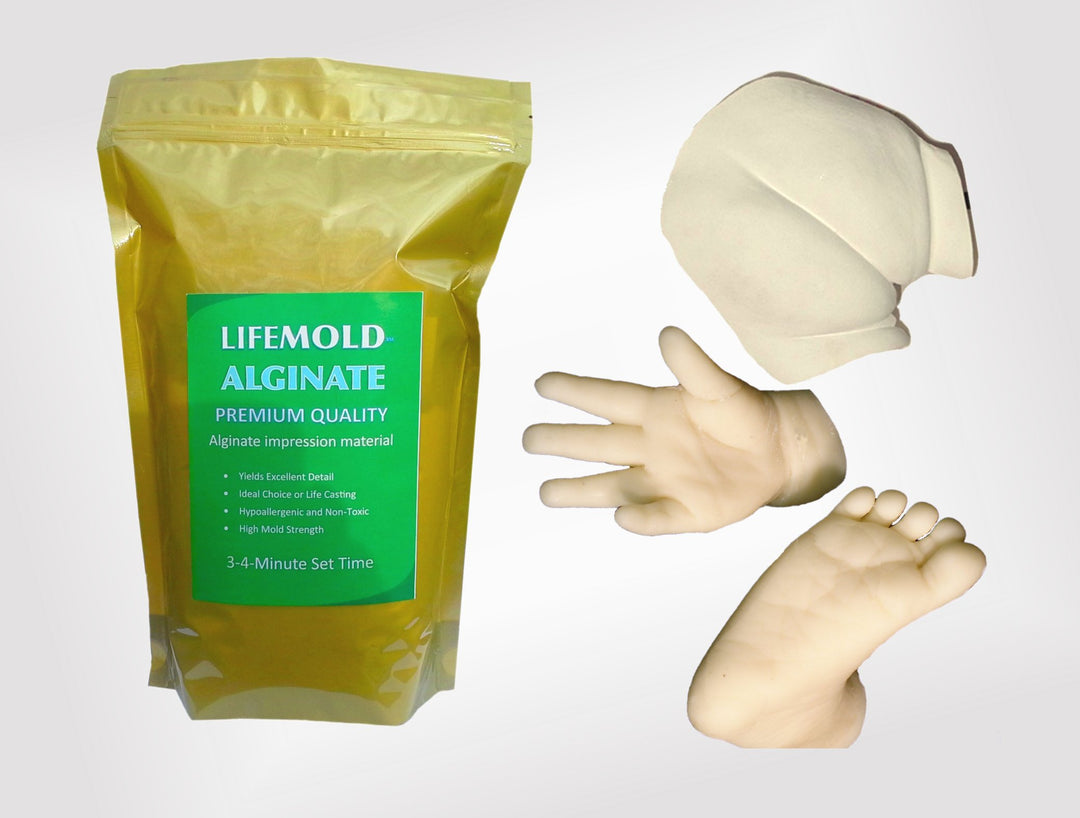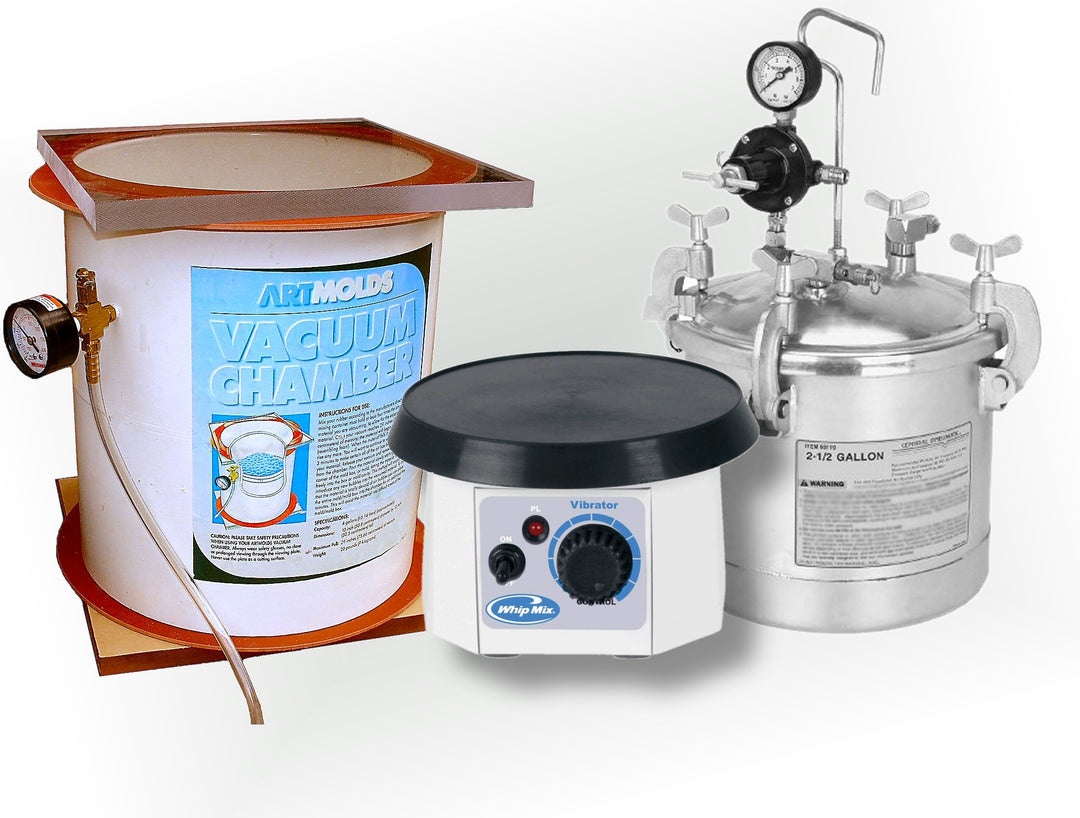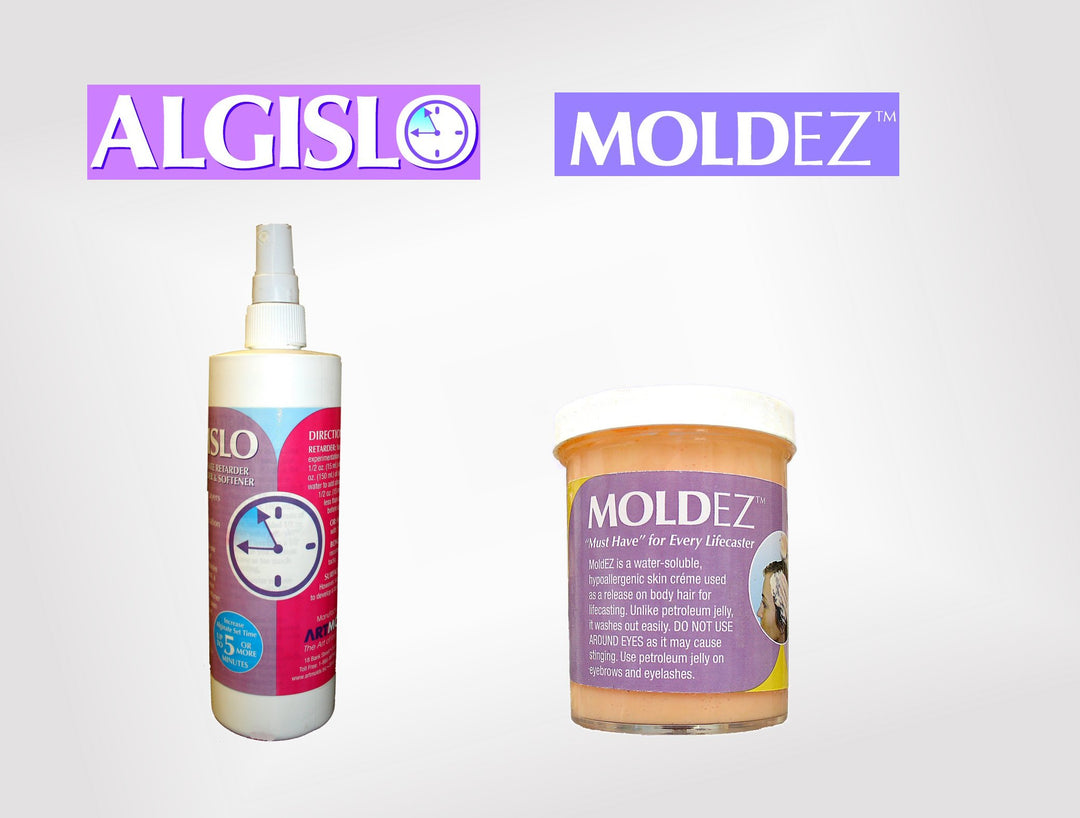Blanket Mold - Poured Single Piece | Page 1 - ArtMolds

Figure 1
A poured blanket mold will usually require less mold rubber than poured block molds. The approach uses a process that resembles placing a blanket over the object to be molded, in this case it is clay instead of wool. Thus, the name “blanket” mold. This method allows the mold maker to form a 3/8" to 1/2" thick layer or blanket of polyurethane or silicone rubber over the model, significantly reducing the usage of expensive mold materials. Latex rubber is not used in this method. In our example, we will use a plaster life cast face which is life size. It doesn't require sealing or painting, as this method it can be created, without the worry of sticking as plastic wrapped is laid on the plaster’s surface to protect it.

Figure 2
To begin, we locate a base to secure the model to keep it from moving A piece of ½-inch plywood or pine board works well for this purpose. Give yourself about a six-inch margin all the way around your model as you will be adding a three-inch flange in clay later and you will need the extra space. Experienced mold makers like to use a melamine board instead of plywood as mold rubbers and clays will not stick to it as they do to wood since the melamine surface has no pores.

Figure 3
Secure the model to the board from the reverse side using wood or sheet rock screws through the bottom of the board. You can also use hot glue or epoxy, but screws are more secure. Drill at least one vent hole behind the model as shown in Figure 3. One or more holes act as vent holes to relieve as gas builds-up in the mold material. These gases will be released through the drilled vent holes.

Figure 4
Using plastic wrap, cover the entire model smoothing down the wrap and snugly fit it to all the undercuts. It doesn’t matter if the plastic wrap extends beyond the edges of your baseboard, but care must be taken to smooth out the wrinkles on the model itself. The plastic wrap will protect the model from the clay which you will be applying, blanketing the entire model.

Figure 5
You will need two ½-inch thick boards by about18-inches long (Figure 5) that you can place parallel to each other four to five-inches apart. We used six large paint stirrers for this purpose which we hot glue three on top of each other to give a ½-inch thickness. You will also need a rolling pin. Cut a piece of medium to soft plasticine from a clay block and place it between the two boards. Using the rolling pin, begin to roll out the clay to the thickness of the boards. In that way you can create a clay strip about a half inch thick to apply over the plastic wrap. Measure the length as you will want the clay strip to extend three inches beyond you model on all sides. This is a called the flange and is an important element in mold construction. Roll out enough half inch clay strips to cover the model. The boards take all guesswork out of what could be difficult job.

Figure 6
Using the clay strips you created lay them over the model (Figure 6) so that they extend three inches beyond the edges of the model. This flange will act as a stop for the shell mold you will create. Press the slabs down tightly to conform to the shape of the model .Care must be taken not to press the clay too hard on the high spots of the model as this can cause the clay to thin out. Fill in any undercuts on the model with the clay. The clay represents the negative space that the mold rubber will later occupy, so you want to assure that you have created a uniform thickness. Otherwise, you will have thin spots or even holes in your completed mold.

Figure 7
Continue adding the clay strips until the model is completely blanketed in clay and there is a 3-inch flange all around the perimeter. Once the model is covered in clay, then you must smooth out the surface (Figure 7). Clay sculpting tools are best for this. It doesn’t need to perfect, but do your best at achieving the smoothest surface possible.





